Bosch ROS20VSC Palm Sander Review
- September 5, 2023
- 0 comment
The world of palm sanders, filled with endless choices and flashy features, often leaves the average user bewildered. Enter the Bosch ROS20VSC Palm Sander – a device I’ve put through its paces to help you determine if it’s the right fit for your toolkit. Here’s my take.
Understanding the Bosch ROS20VSC
Before we dive deep, it’s imperative to establish credibility. I’ve been a DIY enthusiast for the past 10 year, and palm sanders have been integral in several of my projects. From wooden furniture refinishing to intricate crafts, I’ve used and reviewed numerous sanders, and the Bosch ROS20VSC has been a recent addition to my collection.
Performance Metrics
Power & Efficiency
The ROS20VSC is equipped with a 2.5 Amp motor. When we talk about motors, the amperage or “Amp” rating indicates the power of the motor. In the context of sanders, a 2.5 Amp motor is relatively strong, especially when you consider the sander’s compact size. Such a motor can handle demanding tasks, which makes the tool versatile for various sanding applications.

The variable speed feature allows users to select different oscillation rates, specifically between 7,500 to 12,000 OPM (oscillations per minute). Oscillations, in this context, refer to the rapid back-and-forth movement of the sanding pad. A higher OPM means faster sanding and is generally used for more aggressive material removal. On the other hand, a lower OPM is utilized for delicate finishes or when working on softer materials.
In Simpler Terms: Think of this like the gears on a bike. Just as you would shift gears based on the terrain, you can adjust the OPM based on your sanding requirements, transitioning from coarse to fine sanding as needed.
Dust Collection
The ROS20VSC includes a specialized system for trapping dust. The term “microfilter” hints at its ability to catch extremely fine particles. Capturing particles as tiny as 1/2 microns means that this sander is efficient at reducing the amount of airborne dust. For comparison, human hair has a diameter of about 50-70 microns, so 1/2 microns is extremely small.
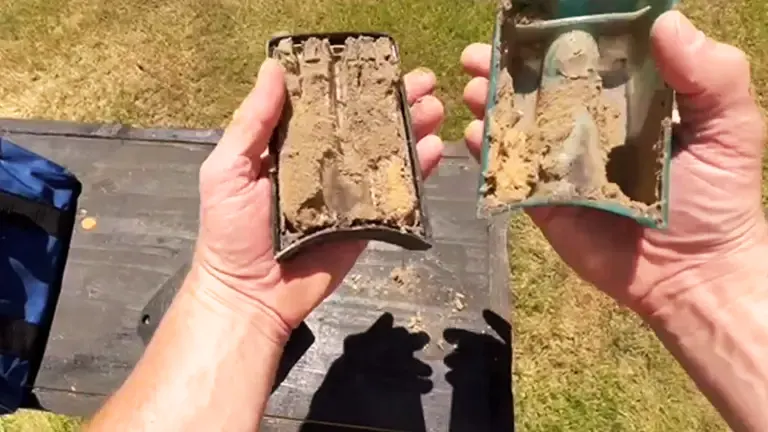
My personal experience with the ROS20VSC revealed that it managed to collect roughly 90% of the dust generated during the sanding process. This not only creates a cleaner work environment but also reduces the inhalation risk associated with wood dust, which can be harmful over time.
Vibration & Comfort
In power tools, especially ones held in hand for extended durations, vibration can be a significant concern. Excessive vibration can cause user fatigue, and discomfort, and even lead to conditions like hand-arm vibration syndrome over prolonged exposure.

The ROS20VSC is designed with user comfort in mind. It has a soft-grip feature on both its top and body. This design choice provides two main benefits: it dampens the vibration reaching the user’s hand, and it ensures a comfortable grip, allowing for extended usage without discomfort.
Comparables
When searching for an optimal palm sander, several factors come into play, from power to ergonomics and price. The ROS20VSC stands out due to its 2.5 Amp motor which, for its compact size, offers impressive power. The variable speeds, ranging from 7,500-12,000 OPM, provide flexibility for diverse tasks. In terms of dust management, the ROS20VSC is also notable for its micro filter system that effectively traps minuscule particles.
On the other hand, the DEWALT DWE6423K is positioned similarly in terms of price and likely motor power. Known for its reliability, DEWALT’s sander, however, doesn’t offer the variable speed function seen in the ROS20VSC. This absence might reduce its versatility, especially for users who often shift between aggressive and fine sanding. Nonetheless, for those on a tight budget, the DEWALT promises a powerful performance without breaking the bank.
Lastly, the Makita BO5041K presents a different value proposition. While it may command a slightly higher price point, this sander offers an added front handle. This design aspect enhances its ergonomics, ensuring greater control during prolonged sanding sessions. For those who prioritize comfort and are willing to invest a bit more for it, the Makita may be their go-to choice.
In conclusion, the selection hinges on individual needs. Budget-conscious users might gravitate towards the DEWALT DWE6423K. In contrast, those prioritizing comfort and control could lean towards the Makita BO5041. The ROS20VSC, however, offers a harmonious blend of power, versatility, and price, making it a compelling choice for many.
| Features | Bosch ROS20VSC | DEWALT DWE6423K | Makita BO5041K |
|---|---|---|---|
| Product Brand | Bosch | DEWALT | Makita |
| MPN | ROS20VSC | DWE6423K | BO5041K |
| Price | $68.99 | $79.99 | $84.99 |
| Weight | 3.5 lbs. | 4.0 lbs. | 3.1 lbs. |
| Product Dimensions | 9 x 5 x 6 in. | 10.4 x 7.2 x 6.2 in. | 10.6 x 4.8 x 6.2 in. |
| Cord Length | 8 ft | 10 ft | 8.2 ft |
| Disc Size | 5 in | 5 in | 5 in |
| Power Source | Corded | Corded | Corded |
| Voltage | 120 V | 120 V | 120 V |
| Amps | 2.5 A | 3.0 A | 3.0 A |
| Variable Speed | Yes | Yes | Yes |
| Dust Collection | Microfilter Dust Canister | Dust Bag | Dust Bag |
| Sanding Pad | RS034 Soft Sanding Pad | Hook and Loop Pad | Hook and Loop Pad |
| Warranty | 1 year, plus service protection plan | 3-year limited warranty | 1-year limited warranty |
| and 30-day money-back guarantee | |||
| Included Accessories | RS034 sanding pad, dampening ring, | Dust bag, vacuum adapter, | Abrasive disc, dust bag, |
| microfilter dust canister, vacuum | sanding pad | vacuum adapter, wrench | |
| hose adapter, sanding disc, carrying bag |
Pros and Cons
Based on my research and hands-on experience:
Pros:
- Variable Speed Control: Provides adaptability for various projects.
- Effective Dust Collection: Helps maintain a cleaner workspace.
- Comfortable Grip: Designed to reduce user fatigue.
Cons:
- Shorter Power Cord: An extension might be required for larger work areas.
- Pad Wear: Over prolonged heavy use, the pad might require replacements.
Key Decision Factors
- Power
- Power essentially dictates how efficient and fast a tool can perform. A sander with ample power will easily handle more demanding tasks and result in smoother finishes in less time. The Bosch ROS20VSC comes equipped with a 2.5 Amp motor, making it quite formidable in its category. This means that for the majority of DIY sanding tasks, from preparing old furniture for repainting to smoothing out a woodworking project, this sander can handle the job effectively.
- Versatility
- For a DIY enthusiast, versatility is vital. No one wants to buy a different tool for every task; instead, a single tool that can adapt to various jobs is more desirable. The variable speed feature of the ROS20VSC is its standout point in this regard. With oscillation rates ranging from 7,500 to 12,000 OPM, it allows the user to toggle between aggressive material removal and fine, delicate sanding. This range ensures that whether you’re working on harder woods or looking for a delicate finish on a softer material, the tool is up for the task.
- Comfort
- Lastly, for many DIYers, comfort can’t be overlooked. Extended projects can become a chore if the tool causes discomfort or fatigue. The ergonomic design of the ROS20VSC, including its soft-grip top and body, ensures that users can work for prolonged periods without excessive strain on their hands or wrists. The reduced vibration feature further amplifies this comfort, minimizing the chances of hand fatigue or any long-term vibration-related issues.
In conclusion, for the average DIY user, the combination of power, versatility, and comfort is paramount when selecting a palm sander. The Bosch ROS20VSC aptly addresses these criteria, making it a top contender in the market. Whether you’re a seasoned DIY enthusiast or someone just starting on home projects, this sander offers the functionalities essential for diverse tasks.
Conclusion
Is the Bosch ROS20VSC the best overall? For its price range, I’d say it’s close. It offers an incredible blend of power, flexibility, and comfort. If you’re a DIY enthusiast seeking a reliable palm sander without burning a hole in your pocket, the ROS20VSC might just be the best fit for you.
Frequently Asked Questions
- What makes the Bosch ROS20VSC’s microfilter dust collection system unique?
The microfilter system can trap particles as small as 1/2 microns in diameter. This results in a notably cleaner work environment and reduces the risk of microscopic particles affecting the finishing of your project. - I’ve heard about variable speed in larger power tools. How does it benefit a compact tool like this palm sander?
Variable speed is crucial even in compact tools. For the ROS20VSC, it means you can adjust the sanding speed according to your task—whether it’s aggressive removal or a fine finish. - Can the ROS20VSC be used for vertical surfaces or ceilings?
Yes, it’s lightweight and ergonomically designed, making it feasible for sanding vertical surfaces. However, for ceilings, you might need some additional support or an extension handle for comfort. - How does the “hook-tight” hook-and-loop disc attachment work?
This feature allows for a firm grip on the sanding pad and ensures the pad doesn’t come off during usage. It’s over 35,000 long-life hooks that secure the pad firmly in place. - With the ROS20VSC’s soft-grip feature, can I expect zero vibrations?
While the soft-grip design dramatically reduces vibration and increases user comfort, no sander can claim zero vibrations. However, the ROS20VSC is one of the better models in its class for minimizing hand fatigue from vibrations. - I’m a DIY enthusiast with small hands. Is this sander too bulky?
Not at all! The ROS20VSC is designed keeping ergonomics in mind. Its compact size and soft-grip make it suitable for users with varied hand sizes. - How does this model compare in noise levels to other palm sanders?
While the ROS20VSC isn’t entirely silent (no power tool is), it’s notably quieter than many competitors in its category, making it more pleasant for prolonged usage. - Is it safe for a beginner to start with the ROS20VSC as their first palm sander?
Absolutely. With its user-friendly features and safety design, it’s a great choice for both beginners and professionals. - Can I use third-party sanding discs, or am I restricted to Bosch-specific ones?
You can use third-party discs as long as they match the size and hook-and-loop system of the ROS20VSC. However, for optimal performance, it’s always good to consider the manufacturer’s recommendations. - With constant use, how often should I consider changing the sanding pad or the microfilter?
The lifespan of these components largely depends on the usage intensity. For regular users, checking the pad and filter every few months is advisable. If you notice decreased performance or wear and tear, it’s time for a replacement.
We’d love to hear from you! Share your personal experiences and thoughts about the Bosch ROS20VSC Palm Sander in the comments section below. Your insights from using this tool could help fellow DIY enthusiasts make informed decisions for their 2023 projects!


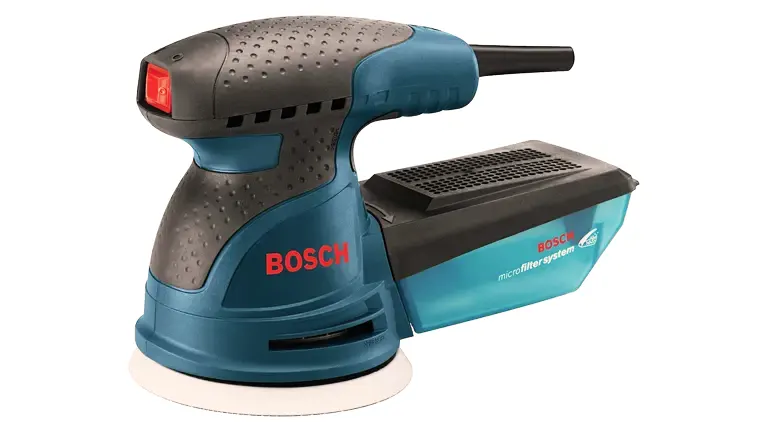
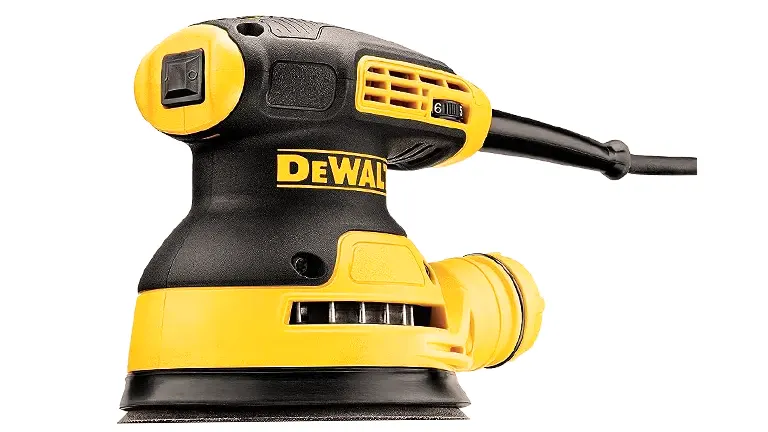


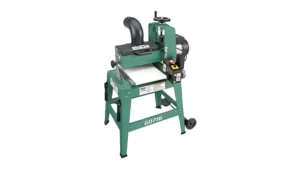
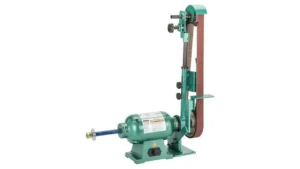


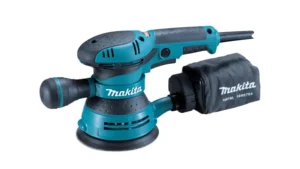
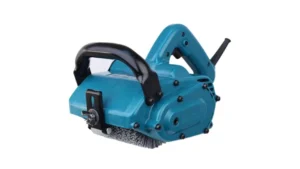
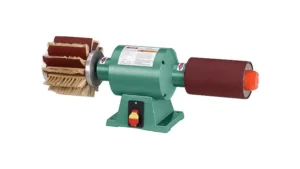


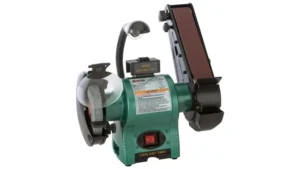
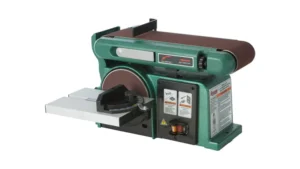
Leave your comment